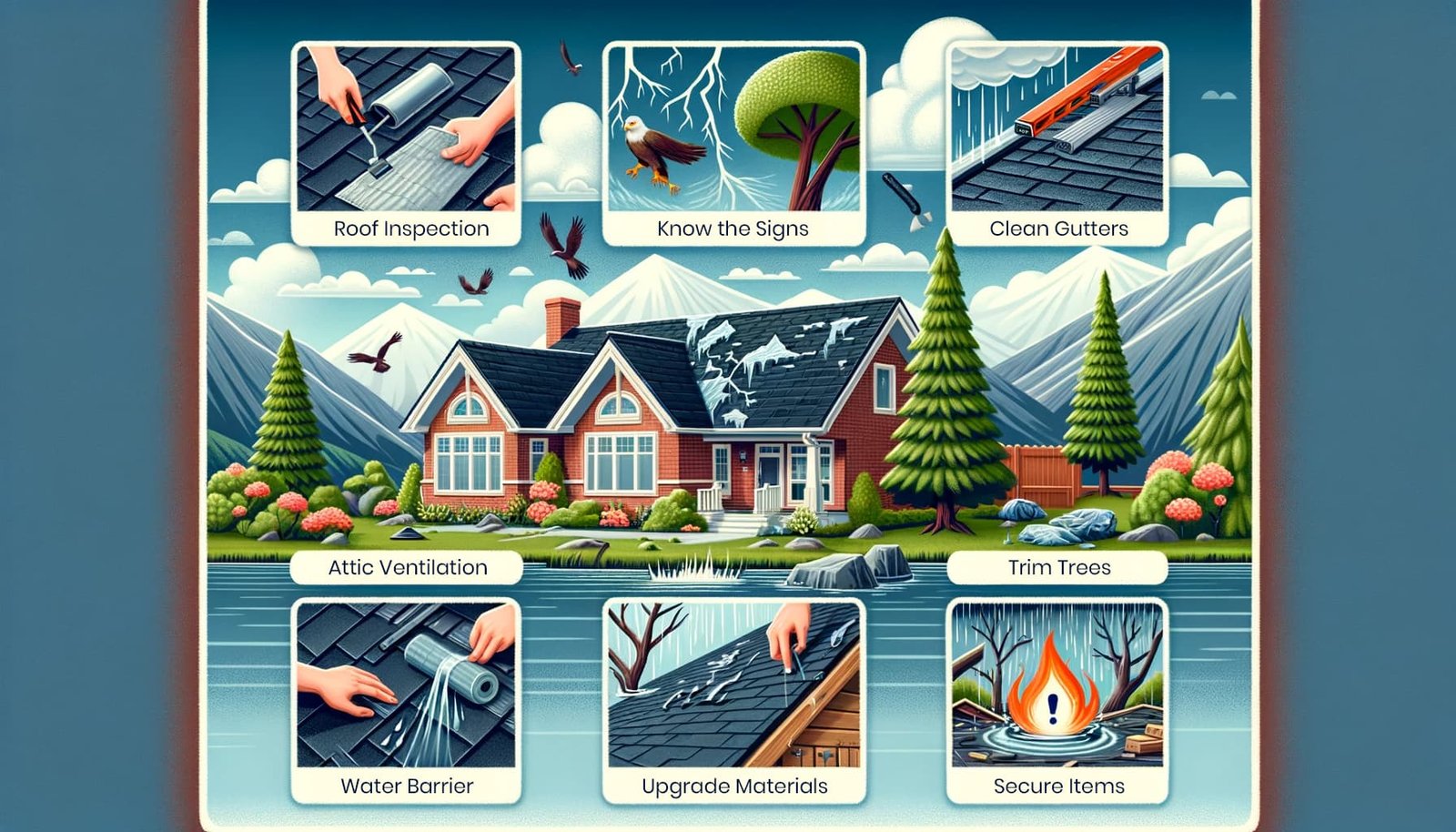Severe weather can wreak havoc on your roof, one of the most critical components of your home. Understanding how to protect your roof from storm damage is essential for every homeowner. This blog aims to provide comprehensive and easy-to-understand guidance on preventative measures against roof storm damage and what to do regarding storm damage roof repair.

1. Regular Roof Inspections:
- Why It’s Important: Regular inspections help identify potential issues before they become major problems. Small cracks or loose shingles can lead to significant damage during a storm.
- What to Do: Schedule a professional roof inspection at least once a year. Look for missing, damaged, or aging shingles, as well as moss or algae growth.
- DIY Tips: Use binoculars to inspect your roof from the ground. Look for visible signs of wear and tear, especially after severe weather events.
2. Keep Your Gutters Clean:
- Why It’s Important: Clogged gutters can cause water to back up and seep under your roofing materials, leading to rot and damage.
- What to Do: Clean your gutters regularly to ensure proper water flow. Remove leaves, twigs, and any debris that could block the gutters.
- DIY Tips: Use a ladder, gloves, and a gutter scoop. Installing gutter guards can also reduce the amount of debris accumulation.
3. Trim Trees Near Your Roof:
- Why It’s Important: Overhanging branches can scrape against roofing materials, damaging them. In a storm, these branches may break off, causing significant damage.
- What to Do: Regularly trim any branches hanging close to your roof. Ensure no limbs are touching or hovering directly over your home.
- DIY Tips: For larger branches or trees near power lines, always hire a professional.
4. Ensure Proper Attic Ventilation and Insulation:
- Why It’s Important: Proper ventilation and insulation prevent heat and moisture buildup in your attic, which can weaken the roof structure and make it more susceptible to storm damage.
- What to Do: Check your attic’s ventilation and insulation. Make sure vents are not blocked, and insulation is dry and in good condition.
- DIY Tips: Look for signs of moisture or mold in your attic, as these can indicate poor ventilation.

0 Comments